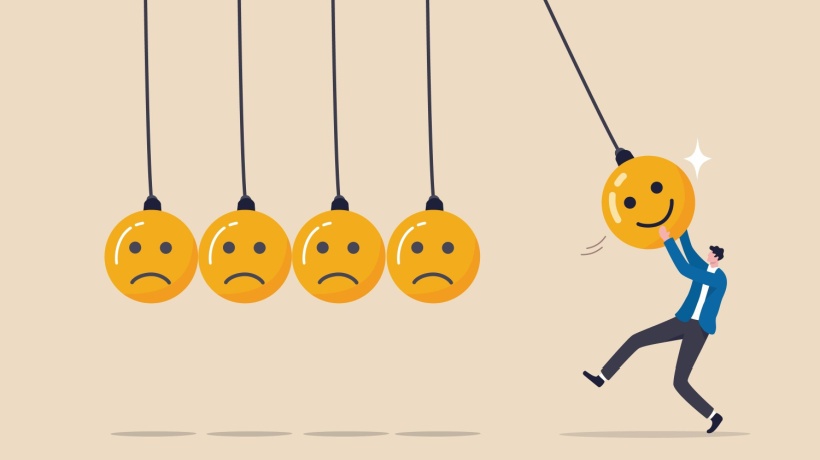The Hidden Killers Of Workplace Communication: Stress And Mood
In today’s fast-paced work environment, stress and mood play a crucial role in shaping communication dynamics among employees. Understanding how these factors influence workplace interactions can help organizations foster better collaboration and productivity. Let’s cut through the fluff and get to the meat of how stress and mood wreak havoc on workplace communication.
The Stress Factor
Stress is an ever-present challenge in modern workplaces, and its effects on communication can be profound. When employees are under pressure, several communication breakdowns can occur:
- Breakdown in communication
Stress often leads to miscommunication or a complete lack of communication. Team members may withhold information, rush through tasks, or misinterpret messages. This can result in errors, missed deadlines, and a general decline in work quality. - Reduced trust and psychological safety
High-stress environments can make team members more guarded and less willing to be vulnerable or ask for help. This undermines the psychological safety essential for open and honest communication. - Impaired decision making
Stress narrows focus to what seems most urgent, potentially leading to overlooking critical details or solutions. This tunnel vision can result in hasty or uninformed decisions that affect the entire team.
Stress: The Silent Saboteur
Stress turns your office into a pressure cooker. It boils over, scalding everyone in its path. Here’s how:
- Communication meltdown
Stress makes people clam up or rush through tasks. Messages get garbled. Deadlines whoosh by. Work quality nosedives. - Trust goes out the window
High-stress environments breed suspicion. People hunker down, afraid to ask for help. Open communication? Forget about it. - Decision-making disaster
Stress narrows focus to a pinpoint. People miss the big picture. Hasty decisions ripple through the team like a bad case of food poisoning.
The Mood Effect
An employee’s mood, whether positive or negative, significantly impacts their communication style and effectiveness:
- Positive moods
When employees are in a good mood, they tend to be more engaged, motivated, and productive. They’re likely to communicate more effectively, showing increased creativity and better problem-solving skills. - Negative moods
Conversely, negative moods can lead to lower motivation, increased absenteeism, and interpersonal conflicts. Employees may struggle to concentrate and make sound decisions, affecting overall team dynamics.
Mood: The Invisible Puppeteer
Your mood pulls the strings of your communication style. Here’s the breakdown:
- Good mood magic
Happy employees engage more. They solve problems creatively. Communication flows like a well-oiled machine. - Bad mood blues
Negative moods drag everyone down. Motivation plummets. Conflicts erupt. The whole team suffers.
The Interplay Of Stress, Mood, And Workplace Communication: A Ripple Effect
The emotional state of leaders and team members can have a contagious effect on the entire workplace:
- Emotional contagion
Research suggests that emotions, especially negative ones, can spread quickly within a team. Leaders, in particular, have a strong influence on the emotional climate of their teams. - Impact on creativity
Negative moods and high stress levels can stifle innovation and creativity. Teams often revert to safe, status-quo solutions rather than exploring new ideas.
Emotions spread like wildfire in an office. One person’s bad day can infect the whole team. Leaders, watch out! Your mood sets the tone for everyone else.
Strategies For Improvement
To mitigate the negative impacts of stress and mood on workplace communication, organizations can implement several strategies:
- Promote emotional intelligence
Train employees in recognizing and managing their emotions, as well as understanding those of others. This can lead to more empathetic and effective communication. - Encourage stress management
Provide resources and training on stress management techniques, helping employees better cope with workplace pressures. - Foster a positive work environment
Create opportunities for positive interactions and celebrations of success to boost overall mood and team cohesion. - Improve leadership communication
Train leaders to be aware of their emotional impact and to communicate clearly and supportively, especially during high-stress periods. - Implement regular check-ins
Establish a culture of open communication where employees feel comfortable discussing their stress levels and emotional states.
Fix It Fast
Want to stop this communication trainwreck? Try these:
- Boost emotional IQ
Teach people to read emotions—their own and others’. Watch communication improve. - Stress-proof your team
Arm your people with stress-busting techniques. They’ll handle pressure better. - Cultivate positivity
Create chances for wins and celebrations. Watch team spirit soar. - Lead with clarity
Train leaders to communicate clearly, especially when the heat is on. - Check-in regularly
Make it normal to talk about stress and feelings. Open the floodgates of communication.
Conclusion
By addressing the interplay between stress, mood, and communication, organizations can create a more harmonious and productive workplace. Remember, effective communication is not just about exchanging information—it’s about understanding the emotions and intentions behind the information. As workplaces continue to evolve, prioritizing emotional well-being alongside clear communication will be key to success.
Remember, great communication doesn’t just swap info. It digs into the emotions and intentions behind the words. Master this, and you’ll leave your competitors in the dust.

